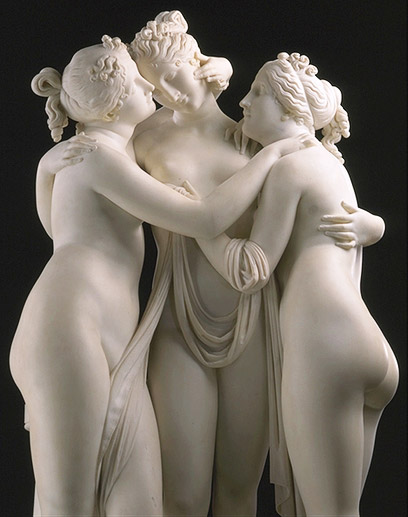The annual Miss World Contest took place last night and this week’s work of art has been chosen because it too enshrines a standard of female beauty, albeit in a somewhat different fashion. It is The Three Graces, created by the neoclassical sculptor Antonio Canova for John Russell, 6th Duke of Bedford. Completed in 1819, the work was originally installed in the so-called “Temple of the Graces” at the Duke’s country seat of Woburn. Having been purchased for the nation in 1994, with a grant from the National Art Collections Fund, it is currently on display in the exhibition “Saved! 100 Years of the NACF” at the Hayward Gallery.
Canova was by far the most acclaimed artist of his time. “Such as the great of yore, Canova is today,” proclaimed Byron. Drawing inspiration from the sculpture of classical antiquity and from the writings of such influential neoclassical theorists as Johann Joachim Winckelmann – who once asserted that the highest beauty, like the purest water, should be free of all flavour – he was admired for his subtle idealisation of the naked human form. Erotically alluring but marmoreally distant, The Three Graces epitomises that union of sensuality and abstract beauty which so moved the sculptor’s contemporaries.
The burgeoning taste for Canova’s work among British connoisseurs and collectors coincided with their rediscovery of the sculptural masterpieces of ancient Greece, most notably the Parthenon frieze sculptures removed from the Acropolis by Lord Elgin and brought to England during the Napoleonic wars. It was to Elgin’s chaplain and enthusiastic accomplice in that project, the Reverend Philip Hunt, that the Duke of Bedford turned when he decided to commission a book about the collection of antique and modern masterpieces which he and his family had assembled at Woburn Abbey. Hunt’s description of The...


